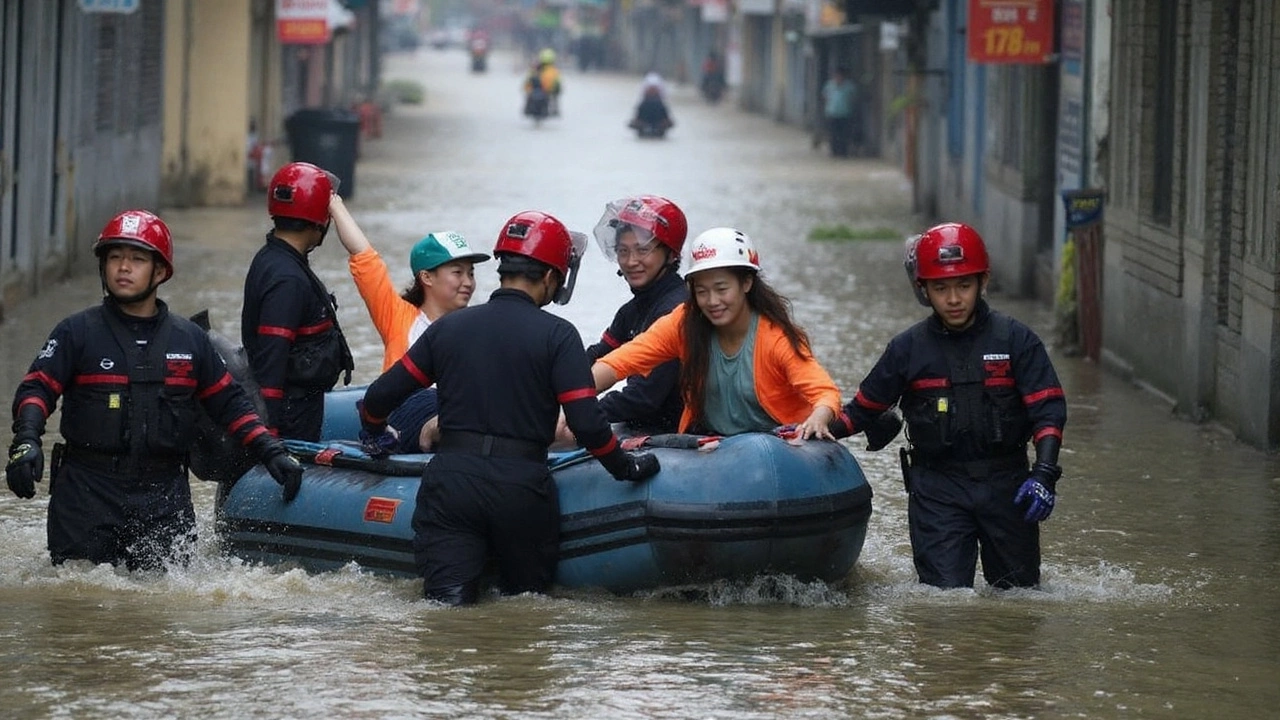Ragasa’s ferocious rise and relentless march
When the system first formed over the Pacific, forecasters expected a typical mid‑season storm. Instead, it ballooned into Super Typhoon Ragasa, whipping up winds that touched 270 km/h (165 mph) and slashing the central pressure to a bone‑dry 905 hPa. In the Philippines, the typhoon was called Nando and slammed Panuitan Island in Calayan at peak fury on September 22, ripping roofs off houses and triggering landslides that buried roads.
After tearing through northern Luzon, the storm rode the South China Sea northwestward, gathering even more moisture. By the time it brushed Taiwan’s eastern coast, rain fell like a hammer, and gusts shredded power lines in Hualien County. The relentless downpour swelled rivers beyond their banks, putting unprecedented pressure on man‑made structures.
One such structure, the Matai'an Creek Barrier Lake, was designed to hold back excess water during heavy rains. The lake’s dam, however, could not withstand the onslaught. Within minutes, the barrier burst, unleashing a wall of water that surged down valleys, sweeping away homes, vehicles, and anything in its path.

Aftermath in Taiwan and the regional ripple effect
The lake’s collapse turned a dangerous storm into a humanitarian catastrophe. Emergency crews counted 14 confirmed deaths, while 46 people remain unaccounted for, many believed trapped in mud or swept out to sea. Local shelters overflowed as residents fled the floodplain, and supplies ran low after days of continuous rain.
Beyond the immediate loss of life, the burst sparked secondary hazards. Landslides clogged mountain roads, cutting off access for rescue teams. Power outages lingered for weeks in remote villages, forcing families to rely on generators and dwindling food stocks.
Rescue operations have been a race against time. The Taiwanese government deployed helicopters, boats, and mountain rescue units, while volunteers scoured the debris for survivors. International aid agencies have sent medical kits and temporary shelters to bolster local efforts.
Meanwhile, the storm’s fury spread westward. On September 24 it struck Hailing Island in Guangdong, China, before making a second Chinese landfall in Beihai, Guangxi on September 25. Each hit brought wind‑driven rain that battered coastal towns, toppled cranes, and flooded low‑lying districts. In Hong Kong, the observatory hoisted Hurricane Signal No. 10—the highest warning—marking only the second instance this year.
Overall, the typhoon has claimed at least 25 lives across the three nations and left 143 injured. Dozens remain missing, and the toll is likely to rise as search teams continue their work. The 2025 typhoon season had been unusually quiet, with about half the usual number of storms up to late September. Ragasa’s sudden emergence flipped the script, showing how a single, powerful cyclone can dominate a season’s narrative.
Experts point to climate‑related changes as a factor in the storm’s intensity. Warmer sea surface temperatures in the western Pacific fuel rapid intensification, while shifting jet streams can steer storms into densely populated areas. The barrier lake failure also reignites debate over the safety of such artificial water retention systems in high‑risk zones.Local officials now face pressure to reassess flood‑control infrastructure, improve early‑warning communications, and refine evacuation protocols. Communities that survived the first wave are bracing for after‑shocks—secondary landslides, disease outbreaks, and prolonged power loss.
As the region begins the long road to recovery, the story of Super Typhoon Ragasa serves as a stark reminder: even in a season that looks calm on paper, nature can unleash a storm that reshapes lives in an instant.
